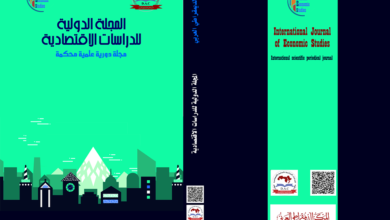
المؤلف : أ.د علي أحمد السقاف – أستاذ الاحصــــــــــاء – قسم الإحصاء والمعلوماتية – كلية العلوم الادارية – جامعة عدن
تحميل نسخة pdf –
الطبعة الأولى “2020″كتاب: – الإحصاء الوصفي والاستدلالي
جميع حقوق الطبع محفوظة: للمركز الديمقراطي العربي ولا يسمح بإعادة إصدار هذا الكتاب أو اي جزء منه أو تخزينه في نطاق إستعادة المعلومات أو نقله بأي شكل من الأشكال، دون إذن مسبق خطي من الناشر .
مقدمة :
ينقسم علم الاحصاء الى فرعين اساسيين هما : الاحصاء الوصفي والاحصاء الاستدلالي . و الهدف من الاحصاء الاستدلالي هو استنتاج خصائص المجتمع من خصائص عينة سحبت منه .
يحتوي الاحصاء الوصفي الاساليب المستخدمة لتلخيص و وصف البيانات الرقمية وذلك بغرض تسهيل تفسيرها . الاحصاء الاستدلالي يحتوي تلك الاساليب والتي من خلالها يتم اتخاذ القرارات حول المجتمع الاحصائي وذلك من واقع العينة المسحوبة من هذا المجتمع .
هذا الكتاب هو ثمرة لخبرتي في تدريس مساق الاحصاء الاستدلالي في جامعة عدن , كلية العلوم الادارية قسم الاحصاء و المعلوماتية لعشرة سنوات مضت .
يحتوي الكتاب على عشرة فصول . في الفصل الاول تم استعراض مفاهيم علم الاحصاء , وظائفه وعلاقته بالعلوم الاخرى . أما الفصل الثاني أحتوى تصنيف البيانات الاحصائية وعرضها و تم التطرق الى العرض الجدولي والعرض البياني بالتفصيل وشرح الاشكال البيانية من الاعمدة البيانية والخطوط وكذلك الدوائر والمضلعات والمنحنيات التكرارية . الفصل الثالث ناقش مقاييس النزعة المركزية واساليب احتسابها وهي الوسط الحسابي والوسيط والمنوال للبيانات الغير مبوبة والبيانات المبوبة . في الفصل الرابع تم استعراض مقاييس التشتت واهمها المدى والانحراف المطلق والتباين والانحراف المعياري وطرق احتسابها للبيانات الغير مبوبة والمبوبة .
الفصل الخامس ناقش نظريات الاحتمالات و مفاهيمها واهم قواعد الاحتمالات مع تطبيقاتها . بينما الفصل السادس استعرض مفهوم الارتباط وكذلك طرق حساب معاملات الارتباط منها معامل ارتباط بيرسون ومعامل ارتباط الرتب . و في الفصل السابع تم استعراض مفهوم الانحدار وكذلك طرق تقدير معادلة الانحدار الخطي البسيط وطريقة المربعات الصغرى .
الفصل الثامن احتوى توزيعات المعاينة الخاصة ببعض التوزيعات المهمة كالتوزيع الطبيعي المعياري وتوزيع t وتوزيع مربع كاي وتوزيع . F .الفصل التاسع تناول التقدير الاحصائي وهما تقدير النقطة وتقدير الفترة و تم استنتاج معادلة فترة الثقة للوسط الحسابي و الفرق بين متوسطي مجتمعين و نسبة المجتمع والفرق بين نسبتين . اما الفصل العاشر (الاخير) احتوى اختبارات الفروض . مفهومه وانواع الخطأ في اختبارات الفروض وطرق اتخاذ القرار . وتم مناقشة اختبار Z و t وكذلك اختبار مربع كاي لجودة التوفيق والاستقلالية و اختبار تحليل التباين ANOVA .
Abstract
Statistics is divided into two main branches: Descriptive Statistics and Inferential Statistics. The aim of inferential statistics is to deduce the characteristics of a population from the characteristics of a sample drawn from it.
Descriptive statistics contain the methods used to summarize and describe numerical data in order to facilitate its interpretation. Inferential statistics includes those methods through which decisions are made about the statistical population , based on the reality of the sample drawn from it.
This book is the fruit of my experience teaching the so called subject inferential statistics at the University of Aden, Faculty of Administrative Sciences, Department of Statistics and Informatics , for the past ten years.
The book contains ten chapters. In the first chapter, the concepts of statistics, its functions and its relationship to other sciences are reviewed. As for the second chapter, it included the classification and presentation of statistical data, and the tabular and graphical presentation were covered in details and these are lines, as well as circles, polygons and frequency curves. The third chapter discusses the measures of central tendency and methods of calculating them, which are the arithmetic mean, median, and mode of ungrouped and classified data. In the fourth chapter, the dispersion measures are presented, the most important of which are the range, the absolute deviation, the variance, the standard deviation, and the methods of calculating them for the ungrouped and classified data.
The fifth chapter discusses probability theories and concepts and the most important probability rules with their applications. While the sixth chapter reviews the concept of correlation, as well as methods of calculating correlation coefficients, including the Pearson correlation coefficient and the ranks correlation coefficient. In Chapter Seven, the concept of regression is presented, as well as methods for estimating the simple linear regression equation and the least squares method.
Chapter 8 contains sampling distributions of some important distributions, such as the standard normal distribution, the chi-square distribution.
The ninth chapter deals with the statistical estimation, which are point estimation and interval estimation . The equation of the confidence interval for the arithmetic mean and the difference between the averages of two populations, the population ratio, and the difference between two ratios were discussed . The tenth (last) chapter contained hypothesis tests , Its concept and types of error in hypothesis tests and decision-making methods. The Z and t-test, as well as the chi-square test for good fit and independence, and the ANOVA test are discussed.
- الناشر: المركز الديمقراطي العربي للدراسات الإستراتيجية والسياسية والاقتصادية





